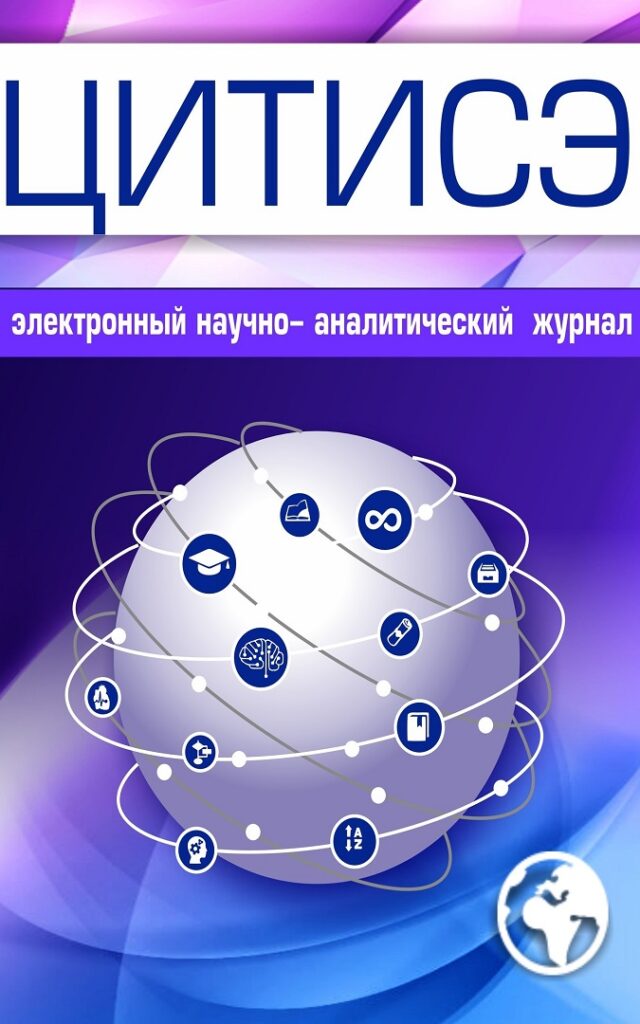Evseev V.O.
FORMALIZATION OF THE THEORY OF SIMILARITY IN THE SYSTEM OF INTERNATIONAL RELATIONS (ON THE EXAMPLE OF THE EAEU)
Scientific article
UDC 339.9;539.97
Abstract. The purpose of the study is to build a criterion for the similarity of the ideologies of state and economic management in the CIS countries, as well as in the countries of the EAEU. It was necessary to obtain quantitative indicators of the relationship between countries in order to more accurately and effectively pursue an integration policy. The methodological basis of the study was the theory of similarity, which has a developed categorical apparatus, a system of criteria and research methods. The method of comparative analysis, cluster analysis, correlation-regression analysis and modeling was used in the work. The initial information was taken from official open sources. The practical significance of the research is expressed in the fact that a formula was proposed for calculating the criterion of similarity of the ideologies of state and economic management of the countries under consideration, correlation coefficients showing the level of identity of socio-political indices between countries were obtained, a correlation and regression model of the influence of ideologies of state economic management on friendly relations with Russia was developed, and a graphical model was proposed. a two-dimensional model of the location of countries in the coordinate system: the level of identity of state ideologies and the level of friendly attitude towards Russia. The conclusions refer to the possibility of further development of the theory of similarity in the system of ideologies of state-economic management. It is said that cluster analysis revealed the presence of compact groups from countries with similar similarity criteria – these are the countries of Central Asia, the highest similarity criteria are in Russia with Belarus and Kazakhstan.
Keywords: similarity theory, the EAEU, the system of international indices, the formula of the similarity criterion of the ideology of state economic management, correlation and regression analysis, the model of friendly attitude towards Russia.
References:
1. Belyaev G.Yu., Management of social behavior in the contexts of ideologems of the new world order//Eurasian Scientific Association. 2021. No. 12-5 (82). pp. 385-391. (In Russian)
2. Vorobyov A.V., Coupling of the EAEU and the Chinese Belt and Road Initiative: essence, successes, problems, prospects//The Eurasian Union: Issues of International Relations. 2023. Vol. 12. No. 1 (47). pp. 16-24. (In Russian)
3. Glazyev S.Yu. The battle for leadership in the XXI century. Russia, USA, China. seven options for the near future.- M.: Book World, 2017.-352 p. (In Russian)
4. Glazyev S.Yu., Chushkin V.I., Tkachuk S.P. The European Union and the Eurasian Economic Community: similarities and differences in the processes of integration construction. – Moscow: VIKOR MEDIA LLC, 2013.-240 p. (In Russian)
5. Gursky V.L., Modeling of the process of harmonization of industrial policy of the EAEU countries//Satsyalna-ekanamichnyya i pravavyya dasledavannya. 2016. No. 2 (44). pp. 121-134. (In Russian)
6.Gavrilko G.N., Letnikova E., Competitiveness of the EAEU member states: comparative analysis//Banking Bulletin. 2015. No. 9 (626). pp. 32-36. (In Russian)
7. Evseev V.O., The mechanism of conflict resolution and the political system of society//
Socio-political sciences. 1990. No. 9. p. 77. (In Russian)
8. Iordanova V.G., Shapor M.A., Altukhova K.P., Evaluation of the effectiveness of integration processes of regional integration associations (on the example of the EU, NAFTA, EAEU)//International economy. 2021. No. 5. pp. 348-362. (In Russian)
9. Kachanova T.L., Fomin B.F. Intra-system interactions according to the “similarity” model (theory)//Izvestiya SPbGETU LETI. 2019. No. 7. pp. 70-79. (In Russian)
10. Kurilo I.V., Androsova S.V., Kolomiets T.Yu., Rumyantseva A.E., The main stages of the development of Eurasian integration: obstacles, current state and prospects//A young scientist. 2017. No. 52 (186). pp. 101-104. (In Russian)
11. Lesnyakov A.A., Evaluation of the effectiveness of the mechanism for the formation of a single transport space in the Eurasian Economic Union//Issues of regional economy. 2018. No. 2 (35). pp. 127-132. (In Russian)
12. Lutsenko S.I., Improving the elements of national and supranational policies for the long-term development of the economy of the Member States and the EAEU//Society and economics. 2022. No. 3. pp. 44-62. (In Russian)
13. Molchanov I.N., Regulation of development and spatial development of the territories of the Russian Federation//Economy. Taxes. Right. 2021. Vol. 14. No. 6. pp. 29-40. (In Russian)
14. Oleinik E.B., Ivashina N.V., Schmidt Yu.D., Modeling of population migration processes: methods and tools (review)//Computer research and modeling. 2021. Vol. 13. No. 6. pp. 1205-1232. (In Russian)
15. Ospanova A.N., Ibraeva A.E., Kilybaeva P.K., the EU and the EAEU: problems and prospects of cooperation//Modern Eurasian studies. 2018. No. 2. pp. 6-13. (In Russian)
16. Osadchaya G.I., Vartanova M.L., Difficulties of economic integration of the EAEU member states and the possibilities of overcoming them//Economic relations. 2018. Vol. 8. No. 4. pp. 617-628(In Russian)
17. Osadchaya G.I., The formation of the Eurasian Economic Union: ideas, reality, potential- M.: Publishing House “Econ–Inform”, 2019. – 127 p. (In Russian)
18. Political science in search of new thinking (informational message)//Social and humanitarian knowledge. 2020. Vol. 6. No. 1 (21). pp. 6-11. (In Russian)
19. Pilipenko I.V., Comparative analysis of the features of socio-economic and institutional development of the member states of the Eurasian Economic Union//Economics and management: problems, solutions. 2018. Vol. 4. No. 11. pp. 43-76. (In Russian)
20.Spivak V.A., System analysis – a key element of the system and critical approach//
Leadership and Management. 2022. Vol. 9. No. 2. pp. 505-522. (In Russian)
21. Sultanbekov K.Ch., Political regime: peculiarities of interpretation and problems of classification//Almanac of Modern Science and Education. 2016. No. 2 (104). pp. 132-134. (In Russian)
22. Selishcheva T.A., Selishchev A.S., Problems of sustainable development of the Kyrgyz economy in the EAEU//Problems of the modern economy. 2021. No. 1 (77). pp. 130-136. (In Russian)
23. Selishcheva T.A., Selishchev A.S., Problems of sustainable development of Belarus in the EAEU//Problems of the modern economy. 2021. No. 3 (79). pp. 13-18. (In Russian)
24. Yakushenko K.V., Methodological approaches to the study of the formation of a single information space//Economic science today. 2020. No. 12. pp. 30-45. (In Russian)


